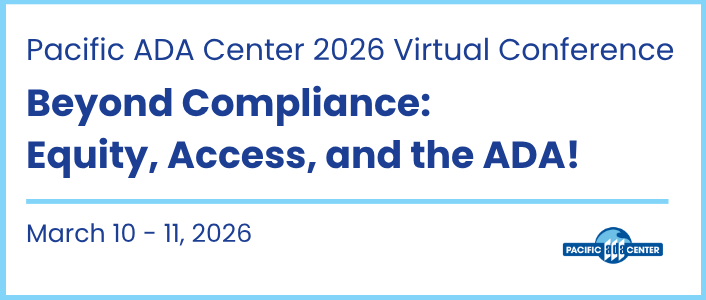
Press Release
PHI Study Links Breast Cancer Risk Today to PCB Chemicals Banned 40 years ago
-
Focus Areas
Chronic Disease Prevention, Environmental Health, Women, Youth & Children -
Issues
Cancer -
Expertise
Research – Surveillance -
Programs
Child Health and Development Studies
Terrible legacy of ‘Persistent Chemicals’ lives on
Oakland, CA – A new Public Health Institute (PHI) study indicates for the first time that a woman’s risk of developing breast cancer as a young adult, before age 50, is three times higher if she has a high fraction of one form of polychlorinated biphenyls (PCBs) in her blood during her reproductive years. 1 of 4 women studied fell into that group.
The study, published online Sunday in the journal Breast Cancer Research and Treatment, linked breast cancer development to chemical exposures, and identified risk due to exposure during a time when the breast is particularly vulnerable to toxins–during puberty, pregnancy, and just after giving birth.
1 out of 4 women in the study had a high proportion of PCB 203, along with a lower proportion of two other PCBs. These women had a 3-fold increased likelihood of developing breast cancer by age 50, when compared to the quarter of women who had the lowest proportion of PCB203.
The study is of particular import because nearly everyone alive today has been exposed to PCBs. PCBs are synthetic chemicals that are endocrine disruptors, interfering with the body’s normal functioning by blocking or mimicking hormones. Classified as persistent organic pollutants, they were widely used from 1929 until 1977, when the U.S. banned their manufacture and use.
However, PCBs are ubiquitous, still found today in the soil, water, the food chain, stored in human body fat, and also found in fish from contaminated waters– meaning even many children born today will still be exposed. In fact, all pregnant women in a 2011 study by University of California San Francisco associate professor Tracey Woodruff, PhD, were found to have PCBs in their blood.
The CHDS team analyzed blood samples collected from pregnant women who were Kaiser Permanente members in the Oakland area from 1959 to 1967, a period when PCBs were routinely used in coolants and lubricants, paints and plasticizers.
Researchers measured PCBs in blood samples obtained shortly after giving birth, when women were an average of 26 years of age. These women were then followed for breast cancer for an average of 17 years. Because the PCBs measured in this study remain in the body for a long time, levels measured just after giving birth reflect what was in the woman’s blood during pregnancy, and may also indicate what was in a woman’s blood years before the blood sample was taken, possibly during puberty, when the breast is also vulnerable.
“To our knowledge, this is the first study to report on breast cancer associations in relation to measured PCB blood levels during critical periods of vulnerability for the breast,” wrote lead author Barbara A. Cohn, PhD, director of the Child Health and Development Studies (CHDS) in Berkeley, where the research was conducted.
This study illustrates how long it takes to determine whether exposures do harm, since breast cancer occurs many decades after the period when the breast is most vulnerable.
“What is concerning,” says Cohn, “is that important exposures happened decades before these women’s cancer actually developed. And women are still being impacted today. One must ask, what are the long term effects of chemicals on the market today? And how can we do a better job of protecting ourselves?”
Cohn’s findings support efforts to minimize exposure to other environmental chemicals that could disrupt biological systems—whether they have been tested for relation to breast cancer or not. Today’s chemicals are distributed throughout the world and in the food supply, so that controlling exposures to new chemicals will require broad cooperative or regulatory efforts that recognize potential harm, rather than proven harm.
In the absence of regulation of chemicals against potential harm, Cohn advises young girls and women who might become pregnant to try to reduce unnecessary exposure to environmental chemicals whenever possible, even chemicals not yet studied for their effect on breast cancer, to minimize the total exposure. She suggests taking steps to avoid chemicals with a similar structure, such as flame retardants found in furniture, as well as fish high on the food chain like bass that contain more contaminants, and to avoid toxic chemicals found in some cosmetics and household products. She refers those looking for specific guidelines to The Breast Cancer Fund website.
The study does not explain why some of the women developed breast cancer while others didn’t, but posits that certain people have higher risk because of the way their bodies metabolize or respond to the exposure.
The current study follows another CHDS study on PCBs in 2011, which found a possible connection between a daughter’s exposure to PCBs in her mother’s uterus and difficulty becoming pregnant as an adult. This is the second breast cancer study conducted by Cohn and colleagues in a unique study population that was followed beginning in pregnancy, the Child Health and Development Studies comprised of 15,000 women in the Kaiser Foundation Health Plan who have been followed since the 1960’s.
The full study can be found at http://www.springerlink.com/content/hll0lk22068w6575/. Co-authors of this study are Mary Beth Terry of Columbia University’s Mailman School of Public Health, Piera M. Cirillo of the CHDS and Marj Plumb of Plumbline Coaching and Consulting, Inc., in Berkeley.
More Updates


PHI’s Population Health Innovation Lab Joins $22M Five-Year Initiative with Merck Foundation to Improve Cardiovascular Care

Call for Speakers: 2026 Americans with Disabilities Act Virtual Conference

“Federal Food Assistance Programs Sustain Families” Statement from the Public Health Institute on SNAP Funding
Work With Us
You change the world. We do the rest. Explore fiscal sponsorship at PHI.
Support Us
Together, we can accelerate our response to public health’s most critical issues.
Find Employment
Begin your career at the Public Health Institute.
